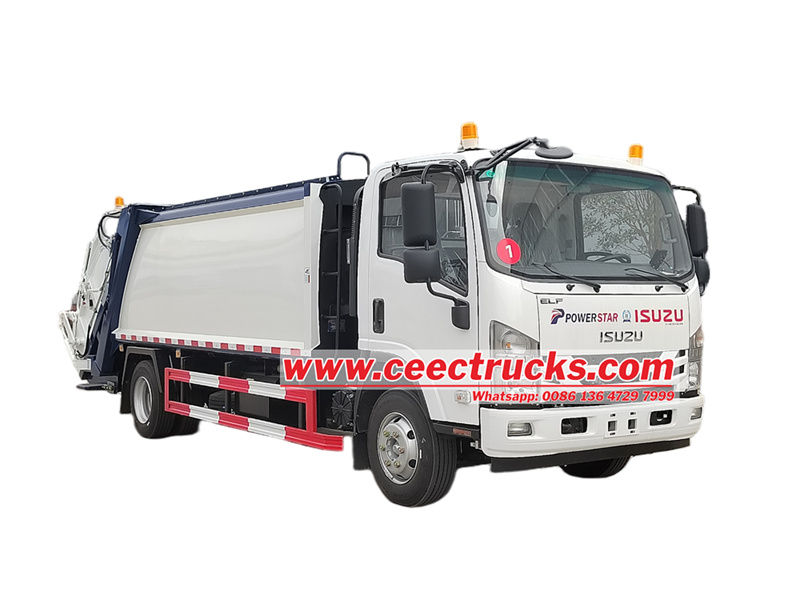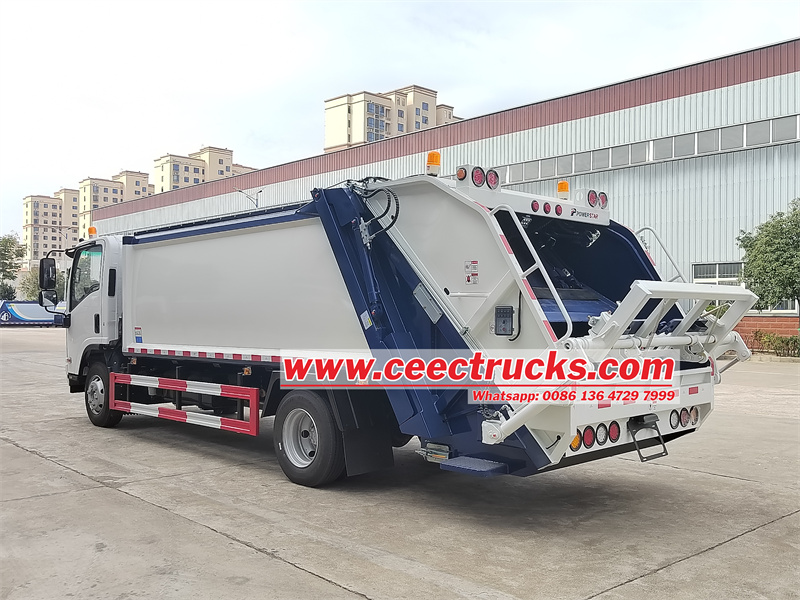
Modern Rear loader garbage trucks, even those rear loader from the same garbage trucks manufacturer, can have unique operating procedures. Each rear loader garbage truck requires some time behind the wheel to become familiar with the operation basics. This is also true for the CEEC Rear-Loader garbage trucks, which have specific functions like a cart tipper for residential pickups and a container tipper kick bar for commercial waste.
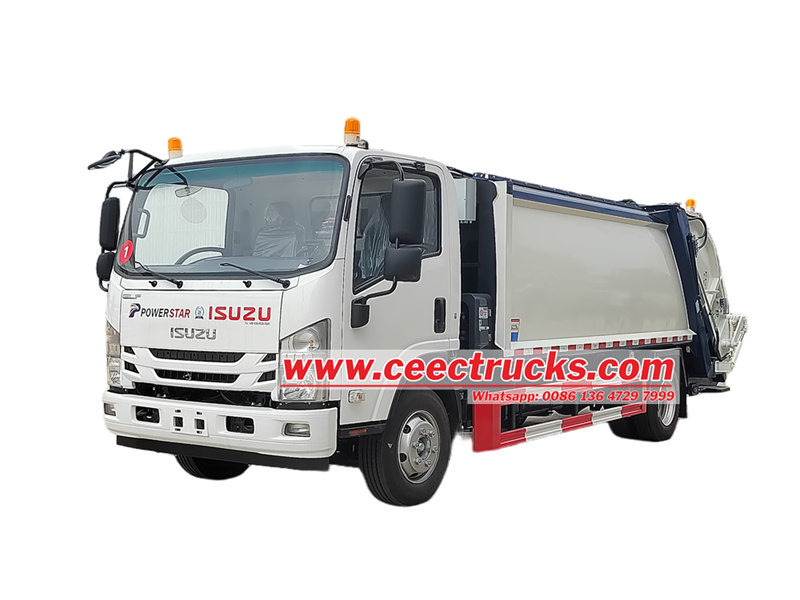
For first-time users and experienced operators alike, there are resources available to help you feel confident when driving a rear loader.
Start with the Manual
The official CEEC user manual for the standard rear loader is the best place to begin. It is available in a digital PDF format, covering all operational aspects, including the manufacturer-specific CODE controls. The in-cabin system is user-friendly for both operators and maintenance personnel providing easy diagnostic and troubleshooting capabilities.
We suggest printing a copy of the CEEC Standard Rear Loader garbage truck manual to have on hand for quick reference by operators and maintenance crews. The operator’s manual includes information on various models such as the Standard Rear Loader, Rear Loader with Tag Axle, XC Rear Loader, XXC Rear Loader, HD Rear Loader, and HD Rear Loader (3.5 YD Hopper).
Topics covered in the manual include safety procedures, how to use the instrument and control panel, refuse loading/packing/ejecting, operating optional equipment like the cart tipper, auxiliary axle, reeving cylinder, and water tank, as well as preventative maintenance, lubrication, and troubleshooting.
Additional Sources of Help
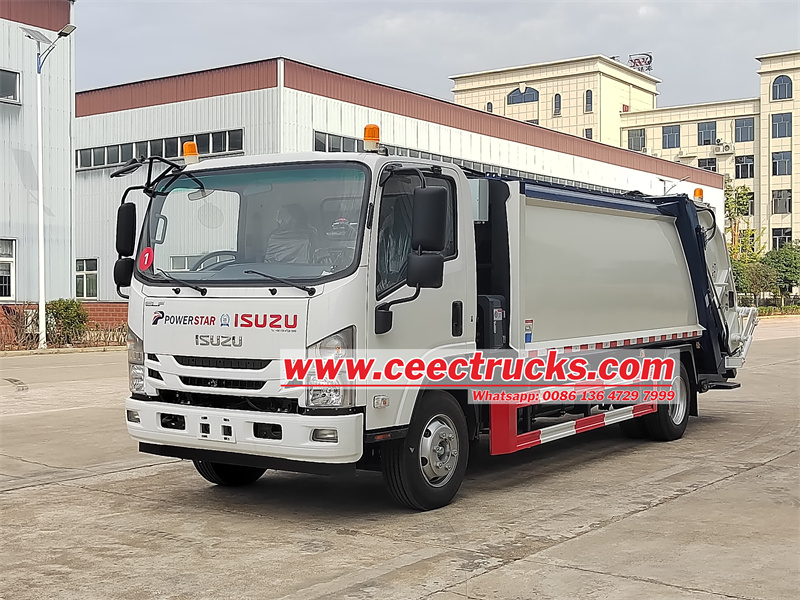
CEEC Trucks provides excellent customer support, offering operational assistance through contact with the manufacturer, access to a wide range of troubleshooting videos, and in-person support at various McNeilus dealerships across the U.S. Some states also offer support through mobile technicians.
Include a CEEC Rear Loader in Your Fleet
Consider adding a CEEC standard rear loader garbage truck to your fleet to increase efficiency and meet growing waste pickup demands. Contact Big Truck Rental to learn more about our flexible short- and long-term rental options.
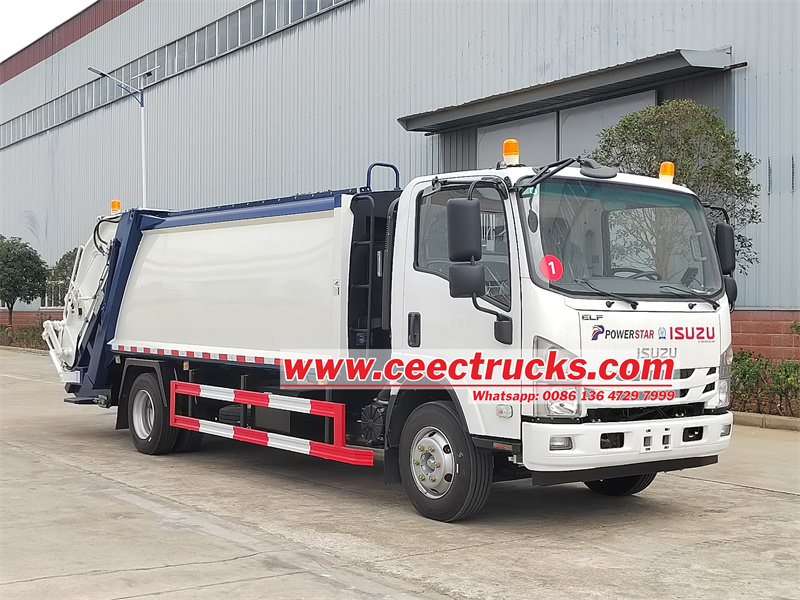
The operation of the Isuzu 700P rear loader garbage truck involves the use of hydraulic cylinders, hydraulic push plate, and hydraulic flipping mechanism.
1. Hydraulic cylinders: To operate the hydraulic cylinders, first, ensure that the truck is properly parked and the engine is turned off. Locate the hydraulic control panel inside the cabin and switch it on. Use the control levers to extend or retract the hydraulic cylinders as needed for loading and unloading garbage.
2. Hydraulic push plate: The hydraulic push plate is used to compact the garbage inside the truck's hopper for more efficient storage. Once the hopper is filled with garbage, activate the hydraulic push plate using the control panel to push the garbage towards the rear of the truck.
3. Hydraulic flipping mechanism: The hydraulic flipping mechanism is used to lift and empty the garbage container into the truck's hopper. Position the rear loader truck near the garbage container and engage the hydraulic flipping mechanism using the control panel. The mechanism will tilt the container, allowing the garbage to slide into the hopper. Every day, consumers dispose of items without much consideration, resulting in a significant amount of waste. We often see rear-loader garbage trucks collecting this waste in our neighborhoods, but have you ever stopped to think about the advanced technology that powers these trucks? Over the years, the waste management industry has made significant strides, leading to the development of rear-loader trucks that not only make the process quicker and safer but also more cost-effective.
Every day, consumers dispose of items without much consideration, resulting in a significant amount of waste. We often see rear-loader garbage trucks collecting this waste in our neighborhoods, but have you ever stopped to think about the advanced technology that powers these trucks? Over the years, the waste management industry has made significant strides, leading to the development of rear-loader trucks that not only make the process quicker and safer but also more cost-effective.
These sophisticated machines mark a major advancement in waste management efficiency. Rear-load trucks have been carefully designed to streamline the waste collection process, making it faster, safer, and more organized. For those interested in learning more about the key players in waste management, a closer look at the inner workings of rear-load trucks will unveil the mechanisms and technologies that simplify the complex task of waste disposal. Curious about how garbage trucks operate? Below, we present some facts about garbage trucks and how our garbage truck company is ready to meet your needs.
Table of Contents
Understanding the Structure of Rear-Loaded Garbage Trucks
1. The Lifting Mechanism
2. The Receiving Point
3. Powering System
The Process of Waste Collection Using Rear-Loaded Garbage Trucks
1. Collection of Waste
2. Compacting Waste
3. Transportation of Waste
4. Disposal of Waste
Advantages of Rear-Loading Garbage Trucks
Innovative Trash Removal Services Offered by Seagull Disposal
Understanding the Structure of Rear-Loaded Garbage Trucks
Rear-load garbage trucks are specialized vehicles designed primarily for residential waste collection. These trucks, equipped with cutting-edge technology, have transformed the waste management industry and shaped professional trash pickup services as we know them today. The distinctive feature of these trucks is the strategic placement of the waste loading system at the rear of the vehicle. Here are a few essential facts about garbage trucks to remember:
1. The Lifting Mechanism
The tipping mechanism plays a crucial role in these trucks. It is responsible for raising garbage bins and emptying their contents into the truck's storage compartment. This automated process minimizes the need for manual labor, making waste collection safer and more efficient. Without the tipping mechanism, workers would have to manually lift heavy loads and empty the waste containers, making the trash pickup service laborious.
2. The Receiving Point
Located directly under the tipping mechanism, the receiving point, known as the hopper, is where the waste initially enters the truck. Serving as a funnel, the hopper guides the garbage into the main storage area of the truck. Its strategic design ensures optimal utilization of the storage space and prevents any waste from spilling out during collection.
3. Powering System
The powering system, driven by hydraulic technology, acts as the core of the truck's operations. By using pressurized fluid, this system powers the tipping and compacting mechanisms. Efficient operation of this system ensures that the waste is compacted effectively, enabling the truck to collect a greater amount of trash in a single trip. Its seamless functioning ensures timely and systematic waste collection.
The Process of Waste Collection Using Rear-Loaded Garbage Trucks
Rear-loaded garbage trucks have become a standard in the industry for various reasons. Their design reduces the need for manual labor, decreasing the risk of injuries. The storage system in these trucks maximizes space utilization, allowing for the collection of a significant amount of waste in one trip. Furthermore, their structure enables easy maneuvering in confined spaces, making them well-suited for residential areas.
The waste collection process is systematic and efficient. Upon arrival, the trash bins are tipped into the hopper of the truck, where the waste is then compacted using the hydraulic system and stored for transportation. How do garbage trucks operate, and what are the typical steps followed by a garbage truck company?
1. Collection of Waste
Careful attention is paid to loading trash to ensure that it is free of large or sharp objects that could potentially damage the compaction machinery. Oversight in this step can lead to malfunctions, affecting the truck's efficiency. Correct loading techniques safeguard the machinery and optimize the use of storage space.
2. Compacting Waste
Once the waste is inside the truck, the compacting process begins. The hydraulic system initiates a compaction plate that compresses the trash. This step is crucial as it maximizes the truck's storage capacity, allowing for a greater amount of waste collection and faster route times. Compacting the waste also reduces the frequency of trips to disposal sites.
3. Transportation of Waste
After collection, the trucks transport the waste to designated sites, such as landfills, recycling centers, or waste-to-energy plants, based on the type of waste. The efficient design of the trucks ensures secure transportation, preventing any spillage of waste materials during transit.
4. Disposal of Waste
Upon reaching the disposal sites, the waste is unloaded. Recyclable items are sorted and processed, while non-recyclable waste is directed to landfills or incineration plants. The trucks are then cleaned and prepared for the next collection cycle, ensuring hygiene and operational efficiency.
Advantages of Rear-Loading Garbage Trucks
Modern garbage trucks have revolutionized waste management practices, offering several advantages over traditional collection methods. Some of the key benefits include:
These trucks have become essential in modern waste management practices, with their numerous advantages making them the preferred choice for municipalities and private waste collection companies. As the amount of solid waste generated continues to grow, efficient solutions like rear-loaded garbage trucks become increasingly crucial. Let us now demonstrate how it's all done.
